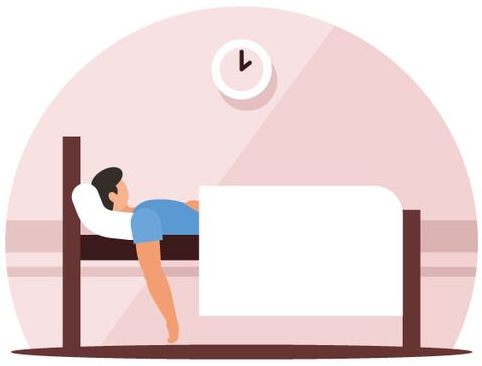
Sleep takes up about a third of a person’s life. It consists of phases of slow and fast sleep. It is believed that slow sleep is associated with the restoration of energy expenditure. At this time it is very difficult to wake a person. At this stage, 80% of dreams occur, and it is at this stage that somnolence and night terrors are possible, but a person remembers almost none of this. Brain activity in the fast sleep phase resembles activity in a state of vigor. At the same time, muscle tone decreases, so the person does not move (just so that we do not go to do what we see in a dream). If you wake up a person at this time, then in 80% of cases you can hear the story of a vivid dream.
By the middle of the twentieth century, sleep was little studied, and scholars differed on it. In particular, there was a widespread hypothesis that the brain in a dream processes the information received during the day. Important things are processed, and unimportant things are removed to make room for new learning. In this way, short-term memories are transferred to long-term “storage” in the prefrontal cortex. This process is called memory consolidation. While we sleep, the brain “sorts” information, adds it to previous experience, and in the morning gives a decision. Hence, the expression that “morning is wiser than evening” or “with this thought we must spend the night.”
There is a hypothesis that sleep disorders can cause memory disorders and dementia.According to statistics, people who do not get enough sleep throughout their lives (due to insomnia, workaholism, shift work) are more likely than others to suffer from Alzheimer’s. This is not a direct cause, but one of the side effects.
In 2012, olfactory researchers at the Weizmann Institute in Israel proved that the connection between sound and smell can be formed during sleep. They based their experiments on normal physiological mechanisms. When we feel the smell we like, we take deep breaths. If the smell is disgusting to us, then we breathe quickly and superficially. So the body minimizes the impact of something negative, and positive – prolongs.
In turn, scientists from Switzerland have suggested that the brain can encode new words during the peaks of slow sleep. The results of such studies were published in the journal ‘Current Biology’ in 2019. Only forty-one German-speaking volunteers agreed to take part in the study. The researchers turned on the recording of a pair of words and their “translations” in a fictional language when the participants fell asleep soundly. For example, “tofer” is a fictional word, and a pair of it was the German word “Haus” (house). Each pair of words was played four times in a row with the order of word switching (ie tofer-Haus, Haus-tofer, tofer-Haus, Haus-tofer). This was to help flexibly link pseudo-words in both directions to real words.
The goal was to see if the words would leave a mark on the patient’s memory, even if he was unconscious. During slow sleep, the activity of the brain alternates every half a second: up and down. Researchers have suggested that the learning process takes place at the “peaks” of activity.
Equally engaging is the fact that the subconscious mind during sleep can process sounds from the outside. Therefore, if you fall asleep “under the TV,” the dream can reflect what you hear. But this is not getting new information.
April 2, 2021


























































Залишити відповідь